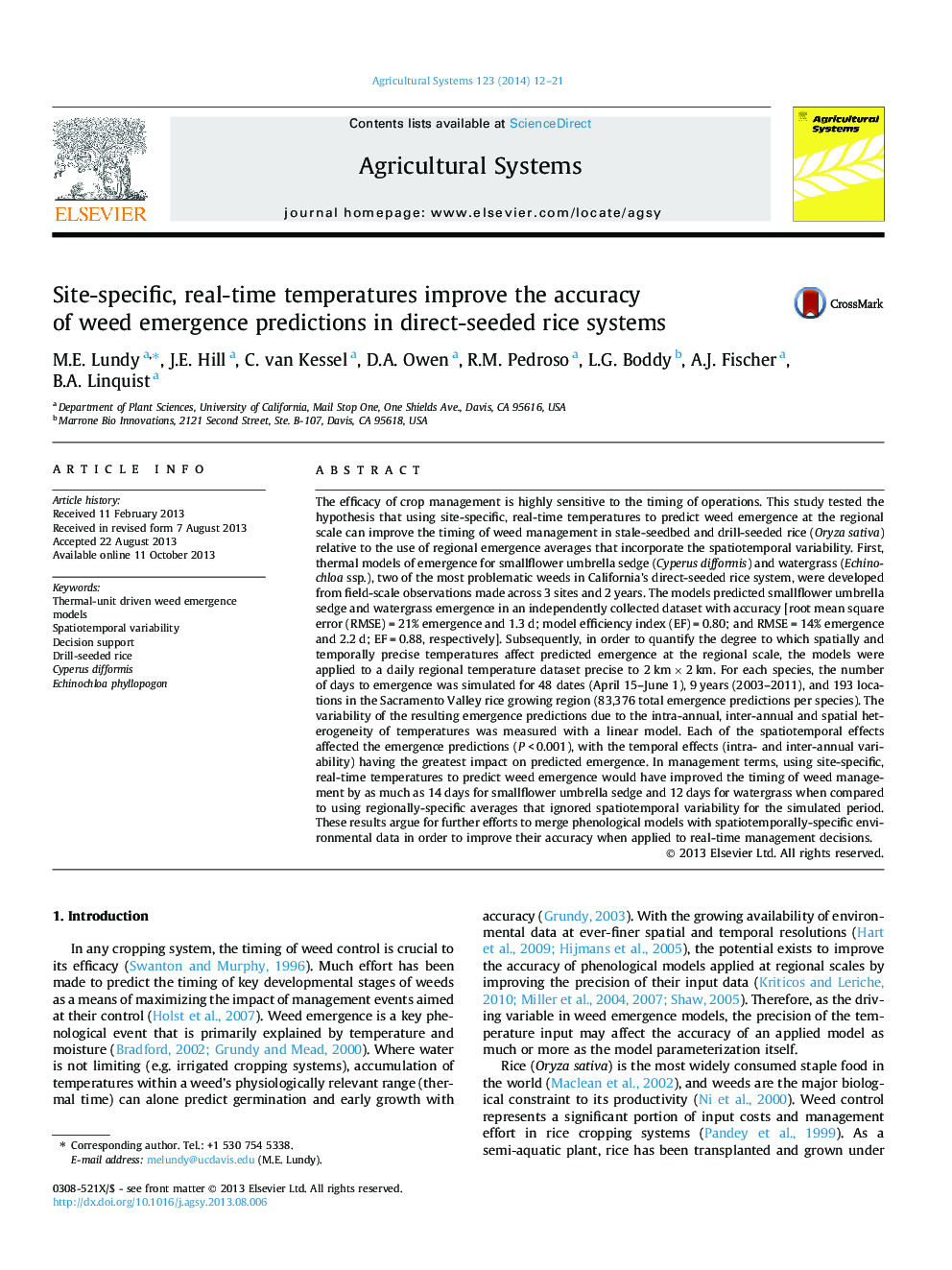| Article ID | Journal | Published Year | Pages | File Type |
|---|---|---|---|---|
| 4491262 | Agricultural Systems | 2014 | 10 Pages |
Abstract
The efficacy of crop management is highly sensitive to the timing of operations. This study tested the hypothesis that using site-specific, real-time temperatures to predict weed emergence at the regional scale can improve the timing of weed management in stale-seedbed and drill-seeded rice (Oryza sativa) relative to the use of regional emergence averages that incorporate the spatiotemporal variability. First, thermal models of emergence for smallflower umbrella sedge (Cyperus difformis) and watergrass (Echinochloa ssp.), two of the most problematic weeds in California's direct-seeded rice system, were developed from field-scale observations made across 3 sites and 2 years. The models predicted smallflower umbrella sedge and watergrass emergence in an independently collected dataset with accuracy [root mean square error (RMSE) = 21% emergence and 1.3 d; model efficiency index (EF) = 0.80; and RMSE = 14% emergence and 2.2 d; EF = 0.88, respectively]. Subsequently, in order to quantify the degree to which spatially and temporally precise temperatures affect predicted emergence at the regional scale, the models were applied to a daily regional temperature dataset precise to 2 km Ã 2 km. For each species, the number of days to emergence was simulated for 48 dates (April 15-June 1), 9 years (2003-2011), and 193 locations in the Sacramento Valley rice growing region (83,376 total emergence predictions per species). The variability of the resulting emergence predictions due to the intra-annual, inter-annual and spatial heterogeneity of temperatures was measured with a linear model. Each of the spatiotemporal effects affected the emergence predictions (P < 0.001), with the temporal effects (intra- and inter-annual variability) having the greatest impact on predicted emergence. In management terms, using site-specific, real-time temperatures to predict weed emergence would have improved the timing of weed management by as much as 14 days for smallflower umbrella sedge and 12 days for watergrass when compared to using regionally-specific averages that ignored spatiotemporal variability for the simulated period. These results argue for further efforts to merge phenological models with spatiotemporally-specific environmental data in order to improve their accuracy when applied to real-time management decisions.
Related Topics
Life Sciences
Agricultural and Biological Sciences
Agricultural and Biological Sciences (General)
Authors
M.E. Lundy, J.E. Hill, C. van Kessel, D.A. Owen, R.M. Pedroso, L.G. Boddy, A.J. Fischer, B.A. Linquist,
